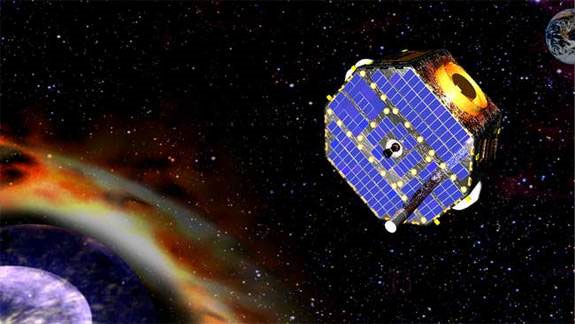New discoveries about diaries
The sun and planets are covered by bubbles of charged and magnetic particles called heliosomes. At the edge of the heliosphere, where it collides with intermittent clumps of gas and dust, it is called fullness, marking the outer boundary of the solar system.
In about a quarter of a century, researchers believe that the sun moves fast enough to create an arc of shock (bow shock), only the gas or plasma region plays a role in shielding the planetary system when it moves in the universe. Astronomers have observed such barriers in other distant solar system relatives, according to researcher Dave McComas of the Southwest Research Institute in San Antonio, Texas.

IBEX is revealing unprecedented secrets about the heliosphere
However, the recent observation results show a surprising fact: the arc-shaped shock zone does not exist because the sun moves more slowly than we thought."The astronomical community has spent more than two or three decades studying something that doesn't exist in reality ," Space.com quoted McComas. Data from NASA's IBEX (stars), shows that the sun is moving through intergalactic clouds at a rate of about 83,700 km / h, slower to 11,250 km / hr. Previous estimates. This speed is not enough to create that buffer, according to Mr. McComas.
The findings could alter the scientific understanding of the high-energy cosmic rays that are listed as dangerous for astronauts. Going deeper into the heliosphere can help them determine how it protects us from high-energy cosmic rays that endanger people.'The heliosphere shields about 90% of cosmic rays , ' McComas said. Without the heliosphere, cosmic rays can affect human-space travels, and even threaten life on earth.
- 10 forgotten archaeological discoveries have been found again
- 10 outstanding scientific discoveries in 2008
- Strange story surrounding an ancient burial area
- One of the most surreal mysteries of the Sun has been decoded
- New discoveries about the human body (Part 2)
- 5 most outstanding scientific discoveries in 2013
- 4 new discoveries about love that amaze you
- New discoveries about animals
- Sex and interesting scientific discoveries
- 9 discoveries about us in 2009
- 2009 bumper plant discoveries
- Why do you relieve stress by writing a journal?
 Van Allen's belt and evidence that the Apollo 11 mission to the Moon was myth
Van Allen's belt and evidence that the Apollo 11 mission to the Moon was myth The levels of civilization in the universe (Kardashev scale)
The levels of civilization in the universe (Kardashev scale) Today Mars, the sun and the Earth are aligned
Today Mars, the sun and the Earth are aligned The Amazon owner announced a secret plan to build a space base for thousands of people
The Amazon owner announced a secret plan to build a space base for thousands of people